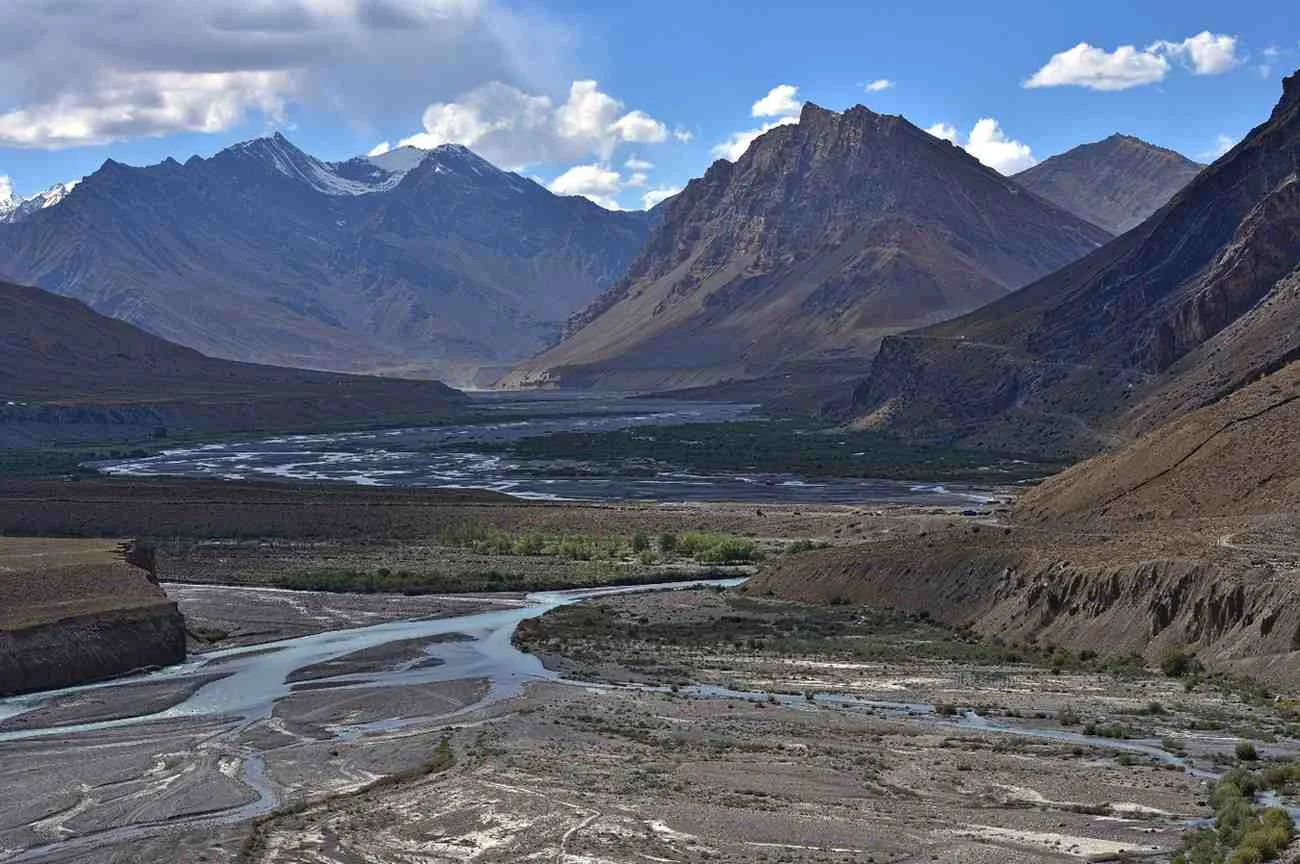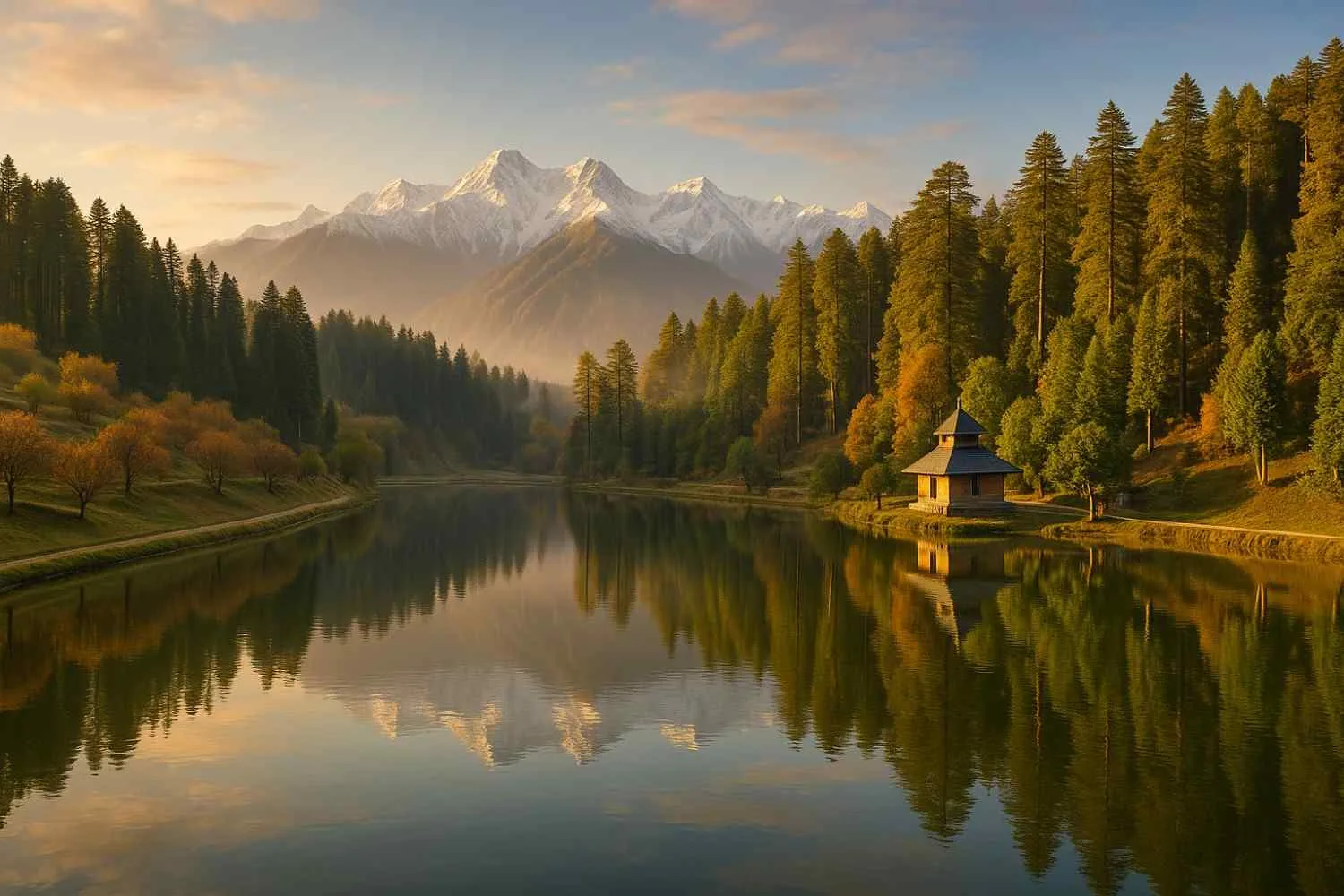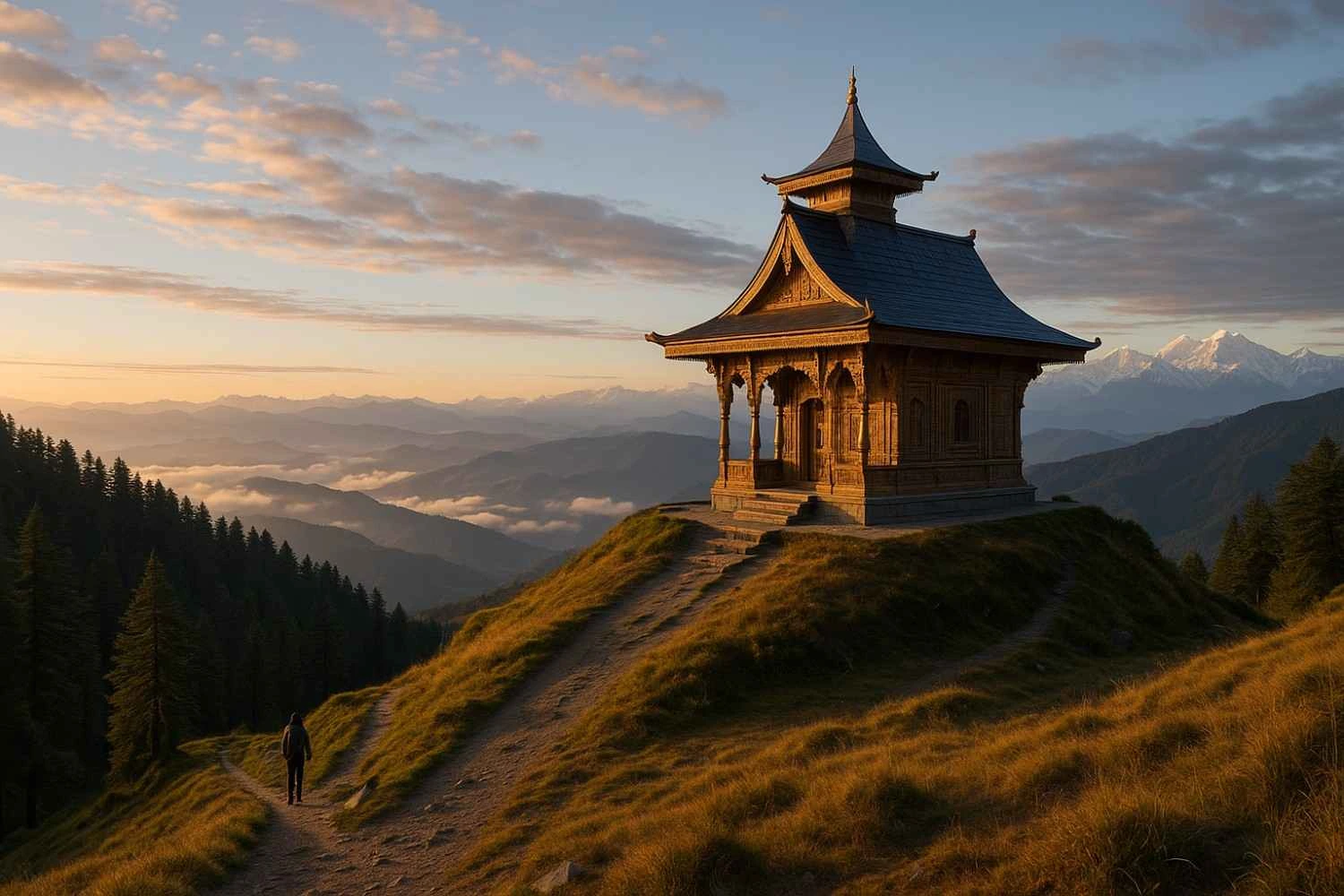Andretta Artist Village is a serene, art-forward hamlet in the Kangra Valley where pottery wheels hum, studios glow with creative energy, and mountain air inspires painters, sculptors, and theatre lovers. It’s best known for Andretta Pottery, its association with Norah Richards—the Irish theatre pioneer who catalyzed the community—and a continuing tradition of artist-led learning.
Andretta Artist Village, located near Palampur in the Kangra Valley of Himachal Pradesh, is a creative hub celebrated for pottery, art, and cultural heritage. Framed by tea gardens and views of the Dhauladhar, it offers hands-on workshops, intimate galleries, and a living legacy of rural theatre.
What is Andretta Artist Village?
Andretta Artist Village is a small, culture-centric settlement in Kangra District, Himachal Pradesh, India, roughly 13 km from Palampur. The village evolved into a recognized artist colony in the early 20th century when Norah Richards, an Irish theatre personality and educator, chose the area for her rural theatre experiments and community projects. Over time, Andretta drew potters, painters, sculptors, ceramicists, and theatre practitioners, transforming it into a creative community where visitors can watch artisans at work, learn pottery, browse studios, and experience a gentle, slow-travel slice of Himalayan life.
Andretta Artist Village – Historical Background & Origin
1. When and why it was established
Andretta’s modern identity as an art colony was seeded in the early 1900s. Drawn by the valley’s quiet charm and potential for rural cultural renewal, Norah Richards settled here and began to champion rural theatre, encouraging students and locals to stage plays rooted in village life. Her initiatives anchored Andretta as a heritage site of theatre and a creative community long before such terms became fashionable.
2. Norah Richards’ contribution
Often called the “First Lady of Punjabi Theatre,” Norah nurtured a practice where performance, writing, and rural realities intersected. Her home (and later memorials to her) remains an evocative stop in Andretta, illustrating how art can shape a place’s identity. In time, her circle and other like-minded creatives made Andretta an open invitation to artists seeking both solitude and dialogue.
3. Evolution as an art hub
By mid to late 20th century, new waves of artists—painters, sculptors, and potters—arrived. Studios sprouted, Andretta Pottery & Craft Society took root, and workshops introduced travelers to the meditative rhythm of clay. The village gained recognition as Himachal Pradesh’s artist village, balancing preservation of its theatre roots with experimentation in ceramics and visual arts.
Why Andretta Artist Village is Famous
- Home to Andretta Pottery & Craft Society – renowned for studio pottery and hands-on classes.
- Legacy of Norah Richards – an anchor of rural theatre history and community arts.
- Hub for painters, sculptors, and ceramic artists – studios, residencies, and informal mentorship.
- Scenic Dhauladhar backdrop – art with a Himalayan horizon; tea gardens and quiet lanes.
- Slow-travel ethos – intimate, artist-led experiences over checklist tourism.
- Cultural continuity – from theatre to clay, the village sustains living traditions.
Things to Do in Andretta Artist Village
1. Visit Andretta Pottery & Craft Society
If there’s one quintessential Andretta experience, it’s this. The Andretta Pottery studio welcomes visitors to observe potters at work and, at certain times, join pottery-making workshops. Learn the basics—wedging, centering, pulling, trimming—or simply shop for handmade stoneware like cups, bowls, planters, and serveware. The glazes often reflect earthy tones and mountain moods, making each piece an authentic keepsake.
2. Explore Norah Richards’ House & Legacy
A visit to Norah Richards’ home (often referred to locally as “Norah’s house”) adds historical depth to your trip. You’ll get a sense of how the theatre pioneer lived and why she chose Andretta to nurture rural arts. The site, rustic yet evocative, frames the story of how one visionary helped seed an entire artist village.
3. Meet Local Artists & Browse Studios
Andretta’s charm lies in artist interactions—you might find a painter experimenting with Himalayan light, a sculptor shaping wood or stone, or a ceramicist exploring new forms. Studios vary in size and style, but conversations with artists often lead to meaningful insights about technique, process, and life in a creative commune.
4. Café Hopping & Art-Themed Homestays
You’ll find cozy cafés offering simple, wholesome fare—think Himalayan teas, organic salads, and comfort meals. Several homestays and small guesthouses echo the village’s art-forward personality: murals, handmade ceramics at breakfast, sketchbooks by the window. Staying in the village (rather than just day-tripping) unlocks the slow rhythms that Andretta is known for.
5. Walks, Photography & Tea-Garden Rambles
Between studios, wander into tea gardens, village lanes, and trails where birdsong competes with your camera shutter. Photography is delightful in the soft morning and late-afternoon light when the Dhauladhar peaks show off their contours and the greens of the valley feel extra saturated.
6. Attend a Workshop, Residency or Pop-up Event
From short pottery classes to artist residencies (periodically announced by studios), Andretta’s calendar gently ebbs and flows. Plan ahead if you want a longer learning experience, or ask around when you arrive—serendipity is a friend here.
How to Reach Andretta
- Nearest Airport: Kangra (Gaggal) – ~40 km from Andretta. Taxis are readily available from the airport to Palampur/Andretta.
- By Train: Pathankot – ~120 km (major railhead). From Pathankot, continue by road (taxi/bus) via Nurpur–Yol–Palampur.
- By Road: Andretta sits about 13 km from Palampur on the NH-503 corridor, with a local turn-off to the village.
- Best Route (from Palampur): Palampur → Sidhbari → Andretta (local signage and community markers guide the final approach).
Best Time to Visit Andretta
| Season | Details |
| March–June | Pleasant weather for studio visits, outdoor walks, and workshops. |
| July–Aug | Lush monsoon greens; expect intermittent rain—great for indoor pottery time |
| Sep–Nov | Crisp views, mellow light—ideal for photography and art events. |
| Dec–Feb | Quiet, wintry charm; carry warm layers if you enjoy off-season calm. |
Where to Stay – Andretta Artist Village
- The Mirage Andretta – A thoughtfully curated stay known for its artsy vibe and village setting.
- Norwood Green, Palampur – A premium stay option about 30–40 minutes away, close to tea estates.
- Local Artist Homestays – Small, warm hosting with an artist-in-residence feel; perfect for longer creative sojourns.
Andretta Artist Village – Nearby Attractions
- Palampur Tea Gardens – Palampur Tea Gardens ~13 km; stroll amid rolling emerald plantations.
- Bir Billing (Paragliding) – Bir Billing ~30 km; India’s paragliding hotspot with cafes and sunset points.
- Baijnath Temple – Baijnath Temple ~20 km; ancient stone temple with exquisite architecture.
- Sobha Singh Art Gallery – nearby Andretta; a must-visit for exploring the legacy of the celebrated painter.
Andretta Artist Village Visitor Tips
- Carry cash – Small studios and cafés may prefer cash; ATMs are limited.
- Ask before photographing – Always seek permission when capturing artists at work or inside studios.
- Book workshops early – Pottery classes can fill up, especially on weekends or during holidays.
- Stay overnight – A relaxed 24–48 hours in the village reveals its true personality.
- Respect the pace – Andretta is a living community, not a theme park; keep noise low and time flexible.
- Buy local – Ceramics, prints, and small artworks directly support the artists who keep the village vibrant.
Why Andretta Belongs on Your Himachal Itinerary
Andretta is not a “see-and-go” attraction; it’s a feel-and-stay experience. You’ll find a rare blend of hands-on learning, artist encounters, and Himalayan calm—without crowds or overplanning. Whether you’re a maker, a collector, or a curious traveler, the village offers authentic culture without losing its small-scale soul.
Conclusion
Andretta Artist Village is a creative escape where art, culture, and nature talk to each other. From Andretta Pottery to Norah Richards’ theatre legacy, it invites you to slow down, learn, and connect—with clay, with stories, and with yourself.
FAQ – Andretta Artist Village
Where exactly is Andretta Artist Village located in Himachal Pradesh?
In Kangra District, about 13 km from Palampur, in the Kangra Valley of Himachal Pradesh
How far is Andretta from Palampur and Dharamshala?
~13 km from Palampur and roughly 45–55 km from Dharamshala, depending on route.
In which district of Himachal Pradesh is Andretta situated?
Kangra District.
What is the altitude of Andretta Village?
Approximately 1,200–1,300 meters above sea level, similar to Palampur’s elevation.
How do I reach Andretta by road, train, or air?
Road: From Palampur via NH-503 and local turn-offs.Train: Pathankot (~120 km) is the major railhead; continue by road.Air: Kangra (Gaggal) Airport (~40 km); taxis connect to Andretta.
Is Andretta Artist Village open for tourists year-round?
Yes, year-round, with spring–autumn being most popular.
What is the weather like in Andretta throughout the year?
Spring–summer is pleasant; monsoon (Jul–Aug) is lush with showers; autumn is crisp; winter can be chilly.
Who established Andretta Artist Village?
Its artistic identity was catalyzed by Norah Richards, the Irish theatre pioneer.
When was Andretta Artist Village founded?
The early 1900s marked the start of its transformation into an artist colony.
What was the vision behind creating Andretta Village?
To promote rural theatre and community arts, fostering a space where art meets everyday life.
Who was Norah Richards and what is her contribution to Andretta?
An Irish theatre practitioner and educator, she championed rural theatre, mentored students, and helped anchor Andretta’s creative identity.
is the historical significance of Andretta in Indian art and theatre?
Andretta is a noted heritage site for rural theatre and a long-standing creative community in the Himalayas.
How did Andretta become an art hub?
Norah’s initiatives drew artists; over time, pottery studios, galleries, and residencies built a self-sustaining art ecosystem.
Which famous artists have lived or worked in Andretta?
Multiple painters, sculptors, and ceramicists have created here over decades; the Sobha Singh Art Gallery nearby underscores the region’s artistic gravity.
Why is Andretta famous for pottery?
Because of Andretta Pottery & Craft Society, known for studio pottery, training, and distinctive stoneware.
What is special about Andretta pottery and crafts?
Functional, hand-thrown stoneware with earthy glazes, inspired by Himalayan landscapes—beautiful and durable.
Can tourists learn pottery in Andretta?
Yes. Short workshops and introductory sessions are often available; inquire and book in advance.
Are there art workshops or residencies in Andretta?
Yes, periodically. Studios announce workshops/residencies seasonally—contact them directly
Which art galleries or studios can visitors explore in Andretta?
The Andretta Pottery studio is central; you’ll also find independent artist studios and the Sobha Singh Art Gallery nearby.
What kind of cultural events take place in Andretta?
Workshops, open studios, occasional performances, and community gatherings—often aligned with tourist seasons.
Is there a museum or theatre in Andretta Village?
You can visit Norah Richards’ house (heritage value) and sometimes find performance spaces for small events.
What materials are used in Andretta pottery?
Primarily stoneware clays and glazes suited for high-fired, functional ceramics.
What are the top things to do in Andretta Artist Village?
Pottery workshops, artist studio visits, Norah’s house, tea-garden walks, and café hopping.
Are there any guided tours available for visitors?
Formal tours are limited; self-guided strolls and on-site guidance at studios are common.
What are the best places to stay in Andretta Village?
The Mirage Andretta, Norwood Green (Palampur), and local artist homestays.
Is Andretta suitable for family trips?
Yes—especially for creative families; children often enjoy clay sessions
Are homestays available near Andretta Pottery Studio?
Yes, several homestays are within walking or short driving distance.
How many hours or days are enough to explore Andretta?
A day trip covers highlights; 1–2 nights lets you take a workshop and meet artists
Is there an entry fee to visit Andretta Artist Village?
No entry fee to the village; workshops and galleries may have separate charges.
What are the top cafes or restaurants in Andretta?
Small local cafés and tea houses; many homestays serve hearty, home-style meals.
Are photography and videography allowed in the village?
Yes outdoors; inside studios or with people, ask permission first.
What should tourists buy from Andretta as souvenirs?
Handmade ceramics, prints, small artworks, and local crafts.
Which places can I visit near Andretta Artist Village?
Palampur Tea Gardens, Bir Billing, Baijnath Temple, and Sobha Singh Art Gallery.
How far is Bir Billing from Andretta?
Around 30 km.
Can I visit Palampur Tea Gardens from Andretta?
Yes—only ~13 km away.
Is Baijnath Temple close to Andretta?
Yes—about 20 km.
Are there trekking or nature trails around Andretta?
Enjoy village walks, tea-garden paths, and gentle forest rambles; serious treks are farther into the Dhauladhar.
What is the best time to visit Andretta Artist Village?
March–June and September–November for weather and workshops.
How is the road condition from Palampur to Andretta?
Generally good, with typical hill-road curves; drive at a relaxed pace.
Are there public transport options to reach Andretta?
Local buses/shared taxis run between Palampur and nearby stops; taxis are most convenient.
What should I pack for a trip to Andretta Village?
Comfortable shoes, a light jacket, a water bottle, and a daypack; in winter, add warm layers.
Is Andretta safe for solo travelers?
Generally safe; standard hill-station precautions apply.
Are there ATMs or petrol pumps near Andretta?
Limited; better to fuel up and withdraw cash in Palampur.
Is mobile network connectivity good in Andretta?
Expect basic to moderate coverage; some pockets may be patchy.
What makes Andretta unique compared to other art villages in India?
Its intimacy, heritage theatre roots, and living pottery culture against a Himalayan backdrop.
Is Andretta Artist Village environmentally friendly?
The small scale and handcrafted focus lend themselves to low-impact living; practices vary by studio/homestay.
What festivals or local fairs are celebrated in Andretta?
Events are community-driven—look out for workshops, open studios, and seasonal gatherings.
Does Andretta have any connection with Sobha Singh Art Gallery?
Yes; the gallery nearby complements Andretta’s creative circuit and is often clubbed into itineraries.
Can I volunteer or intern in any art programs at Andretta?
Possibly—contact studios directly; opportunities depend on season and capacity.
How can artists showcase their work at Andretta?
Reach out to local studios, galleries, or residency programs with a portfolio and proposal; many are open to collaborations.






